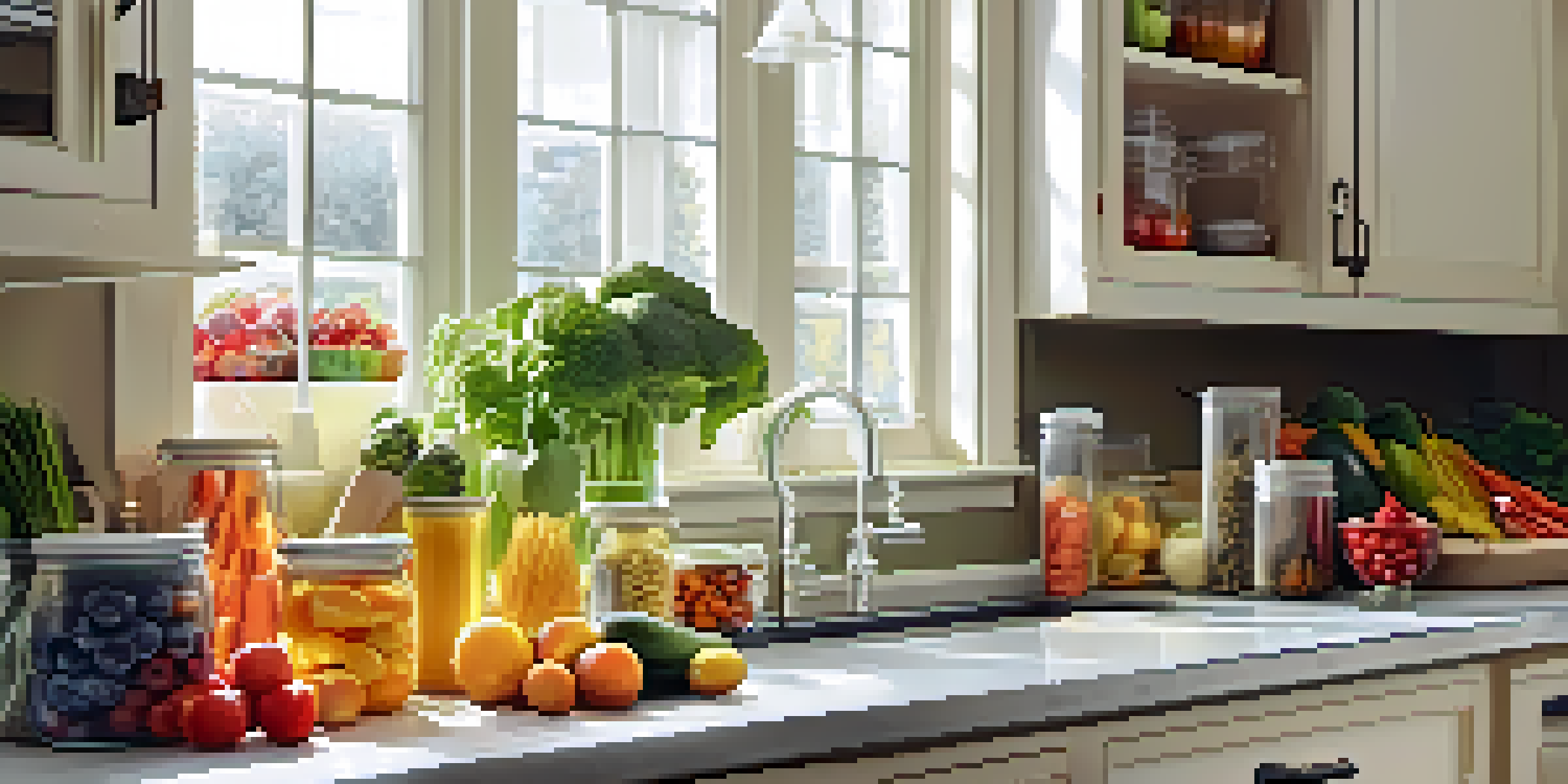Allergen-Free Cooking: Tips for Safe Meal Preparation

Understanding Common Food Allergens for Safer Cooking
Food allergies can be serious, and knowing the common culprits is crucial for safe cooking. Some of the most common allergens include peanuts, tree nuts, milk, eggs, wheat, soy, fish, and shellfish. Understanding which foods to avoid is the first step to creating allergen-free meals.
Food allergies are not just a matter of preference; they are a matter of life and death.
Reading labels is essential when buying packaged foods. Even trace amounts of allergens can trigger reactions in sensitive individuals, so always check for allergen warnings. Familiarize yourself with the ingredients that can hide under different names, such as casein in dairy or gluten in wheat products.
In addition to these common allergens, be aware of cross-contamination during cooking. Using separate utensils and cutting boards can help ensure that allergens don’t accidentally mix with safe foods, making your kitchen a safer place for everyone.
Creating a Dedicated Allergen-Free Cooking Space
Designating a specific area in your kitchen for allergen-free cooking can greatly reduce the risk of contamination. This space should be free from any allergens and equipped with its own utensils, pots, and pans. By doing so, you create a safe haven for preparing meals.

Make sure to thoroughly clean all surfaces before starting to cook. A simple wipe-down with warm, soapy water can remove any lingering allergens. For deeper cleaning, consider using a food-safe disinfectant that is effective against allergens.
Know Common Food Allergens
Understanding common allergens like peanuts, dairy, and shellfish is essential for safe cooking.
Having a separate storage area for allergen-free ingredients is also beneficial. This helps to prevent accidental mixing with allergenic foods and ensures that you always know where to find safe ingredients.
Choosing Safe Ingredients: What to Look For
When selecting ingredients, opt for fresh, whole foods as they are less likely to contain hidden allergens. Fruits, vegetables, and unprocessed grains are great options for allergen-free recipes. Always choose organic or local produce when possible, as they tend to have fewer additives.
Cooking is like love; it should be entered into with abandon or not at all.
For packaged items, look for brands that specifically label their products as allergen-free. Many companies now cater to those with dietary restrictions, making it easier to find safe options. Don't hesitate to reach out to manufacturers for clarification on their ingredients.
It's also wise to learn about substitutes for common allergens. For example, almond milk can be replaced with oat or coconut milk, and flaxseed can replace eggs in baking. These alternatives can help you maintain the flavor and texture of your meals while keeping them allergen-free.
Meal Prepping: Strategies for Allergen-Free Dishes
Meal prepping is a fantastic way to ensure you always have allergen-free options on hand. Choose a day each week to prepare meals that can be easily stored and reheated. This not only saves time but also helps you avoid the temptation of grabbing allergenic takeout.
When meal prepping, consider making large batches of versatile dishes that can be easily adapted. For example, a base of quinoa can be topped with various roasted vegetables, proteins, or sauces, allowing for a variety of meals throughout the week.
Create Allergen-Free Zones
Designating a specific area in your kitchen for allergen-free cooking reduces the risk of contamination.
Labeling your prepped meals is key for easy identification. Use clear containers and mark them with the date and contents to avoid any confusion. This simple step can save you time and ensure everyone in your household knows what's safe to eat.
Cooking Techniques That Promote Allergen Safety
Certain cooking techniques can help minimize the risk of allergen exposure. Steaming or boiling foods can be safer than frying, as frying often involves shared oils that may contain allergens. Opting for techniques that keep food separate is especially important.
When cooking for someone with allergies, consider preparing meals from scratch. This allows you to control every ingredient and avoid potential allergens. Plus, it can be a fun way to explore new recipes and cooking methods together.
Using dedicated cooking tools, like a separate cutting board for allergen-free prep, can make a big difference. Keeping these tools distinct from those used for allergenic ingredients helps reduce the risk of cross-contamination.
Educating Everyone About Allergen-Free Cooking
Education is key when it comes to allergen-free cooking, not just for the cook but for everyone involved. If you're cooking for friends or family, take the time to explain your allergen-free practices. This fosters understanding and cooperation in the kitchen.
Consider hosting cooking classes or workshops on allergen-free cooking. Engaging others in the process not only makes it fun but also empowers them to confidently prepare safe meals. Sharing knowledge can create a community that supports those with dietary restrictions.
Stay Informed for Safety
Utilizing resources like cookbooks and online communities helps you stay updated on allergen-free cooking practices.
Additionally, creating a recipe book or sharing online resources can help others learn about allergen-free cooking. This not only spreads awareness but also encourages more people to explore safe cooking practices in their own homes.
Staying Informed: Resources for Allergen-Free Cooking
Staying informed about the latest trends and research in allergen-free cooking can significantly enhance your meal prep. Websites, blogs, and forums dedicated to food allergies often provide valuable insights and recipes. These resources can help you stay current on safe practices and ingredient substitutions.
Cookbooks focused on allergen-free recipes are also a great investment. They often come with helpful tips, meal plans, and even substitution guides that simplify the cooking process. Look for those authored by chefs who specialize in allergen-free cuisine.

Lastly, consider joining local or online support groups for individuals with food allergies. These communities offer a wealth of shared experiences, recipes, and advice. Connecting with others who face similar challenges can provide not only knowledge but also encouragement and support.